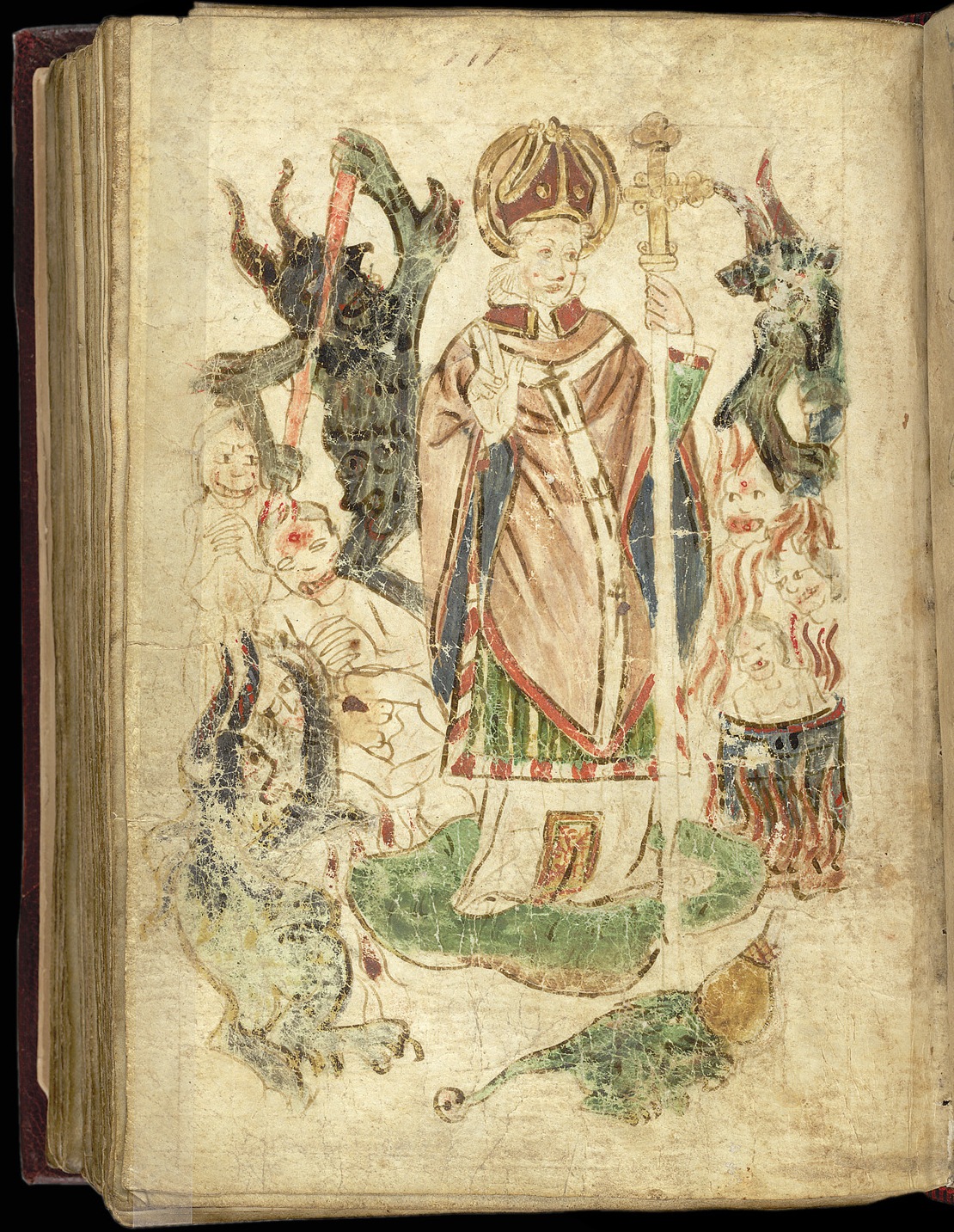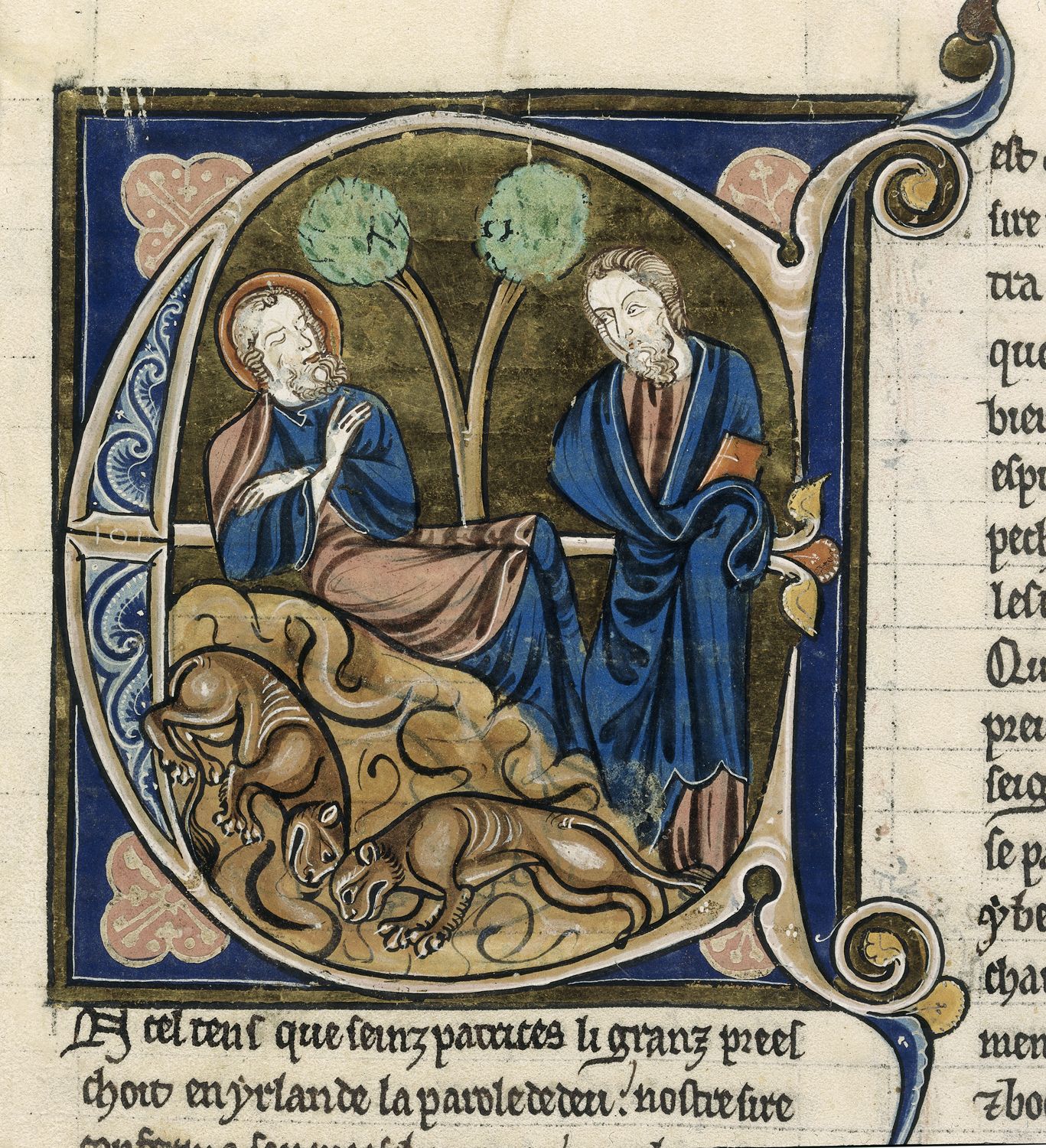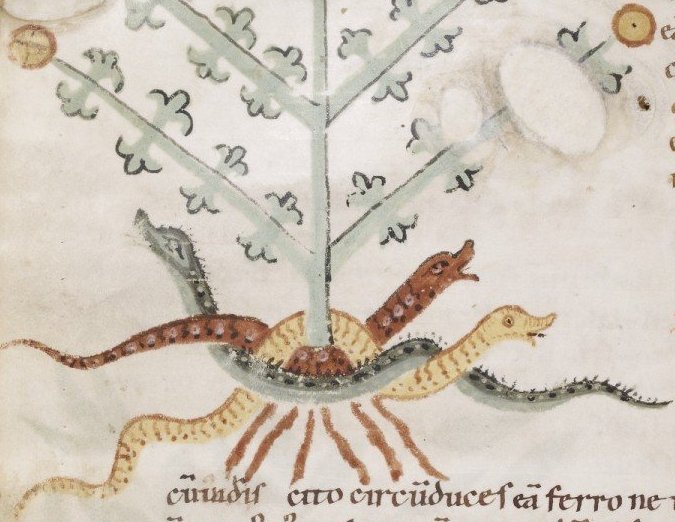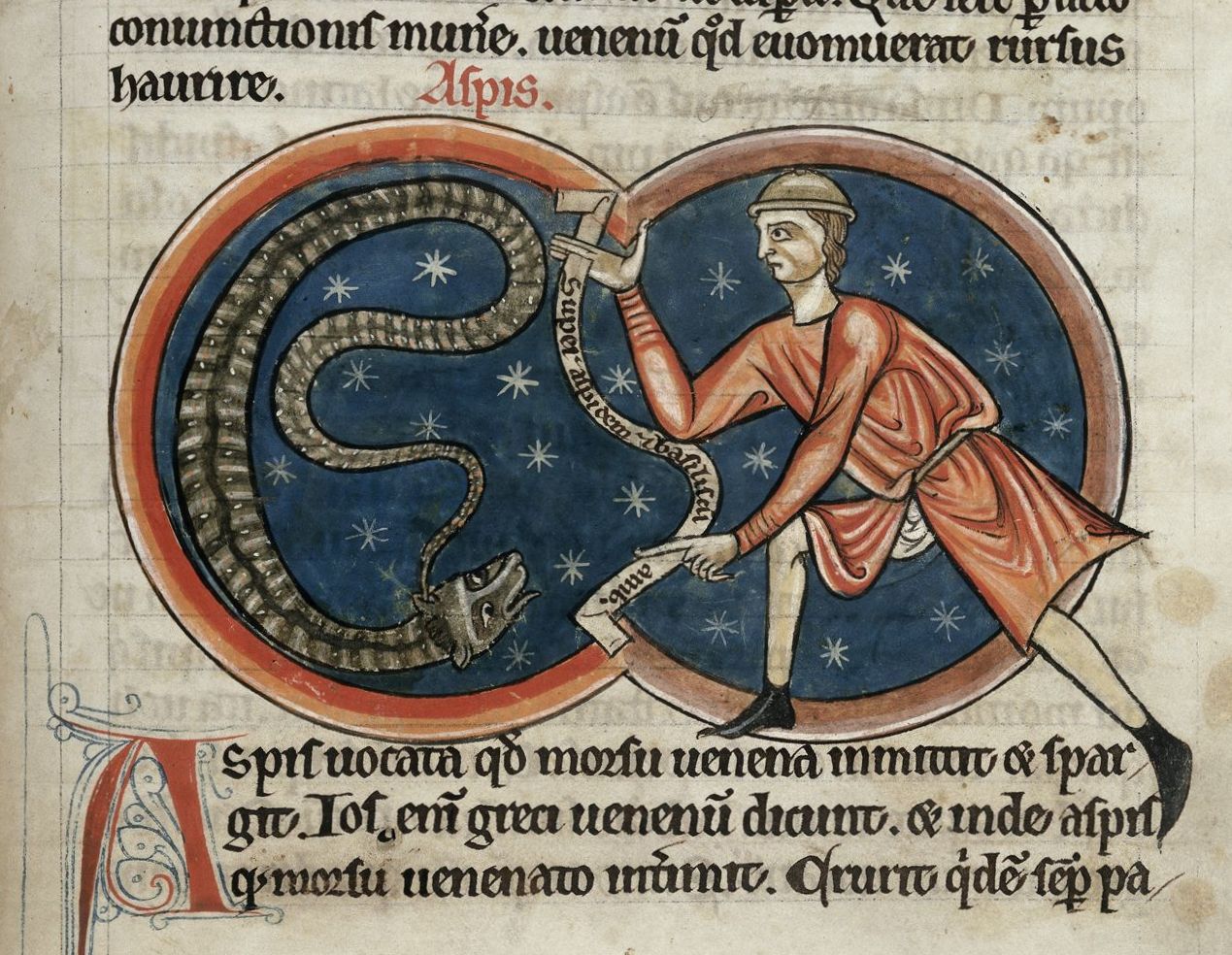
St. Patrick’s Day is just around the corner, and at Notre Dame, proud home of the Fighting Irish, it seems a fitting time to examine more closely this saint now synonymous with Ireland. It may come as a surprise to learn, then, that the saint is not, by birth, Irish at all. Instead, Patrick was born in Roman-occupied Britain, in the late fourth or early fifth century. His first encounter with Ireland was not a friendly one, as he was captured by Irish raiders at sixteen, and sold into slavery. Six years later, the young slave was able to escape, and made his way back to Britain. Years later, he returned to Ireland, becoming the “Apostle of the Irish” for his efforts to convert the Irish to Christianity. He was not the first missionary to come to the island – he was preceded by enigmatic figure St. Palladius, who was sent to Ireland by the pope in 431. But for whatever reason, it is Patrick’s reputation that has proven the more enduring.

Popular myth credits him with “driving the snakes out of Ireland,” although this is not the Herculean task it might sound, since there do not seem to ever have been snakes in Ireland to begin with! Scientists attribute this circumstance to Ireland’s lack of a landlink to mainland Europe following the last ice age. The usual explanation for the snake tale (besides a desire to credit an observed anomaly to a well-known national hero) is that the story is in its roots an allegorical one. In Genesis and elsewhere, the association between snakes and the demonic is strong.

The medieval allegorical connotations of the venemous asp give a window on some of the associations that discussion of snakes might have brought up, and are not inapropos to Patrick’s story. The asp, medieval bestiaries tell us, has a defense mechanism against that natural predator of asps, the snake-charmer, who draws it from its hole in these stories not with pipe music but with mystic incantations. An unwary snake could find itself in trouble this way, bewitched from its protective home. But the clever asp does the no-hands equivalent of putting its fingers in its ears, pressing one ear to the ground and sticking its tail in the other to block out the sound of the charmer’s chanting (a particularly tricky technique to execute, given snakes’ lack of external ear structures). In this way, the asp can be read allegorically as a recalcitrant convert, with one ear to worldly pleasures, and stopping up the ear that might hear words from heaven advocating spiritual reform: an appropriate genius loci for an aspiring missionary to cast out. While you’re wearing your green this St. Patrick’s Day, then, don’t forget to watch out for snakes!

Nicole Eddy
Postdoctoral Research Associate
Medieval Institute
University of Notre Dame
Want to know more about Patrick? The story continues with St. Patrick’s Excellent Adventure in Purgatory.

Adomnan’s _Life_of_St._Columba_ tells a similar tale of Columba casting all of the snakes out of the island of Iona, where he would found his monastery. (An interesting aside: Adomnan’s work also contains the earliest extant reference to the Loch Ness Monster, which Columba battled.)